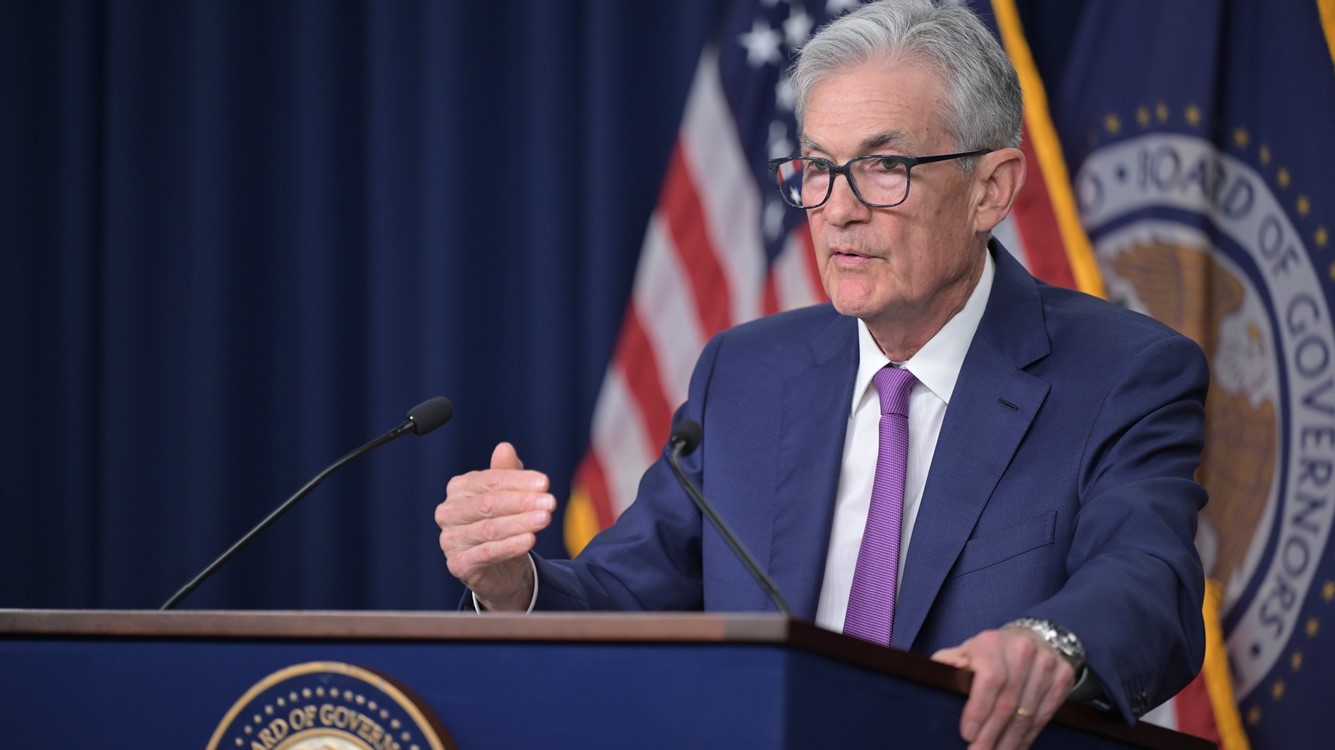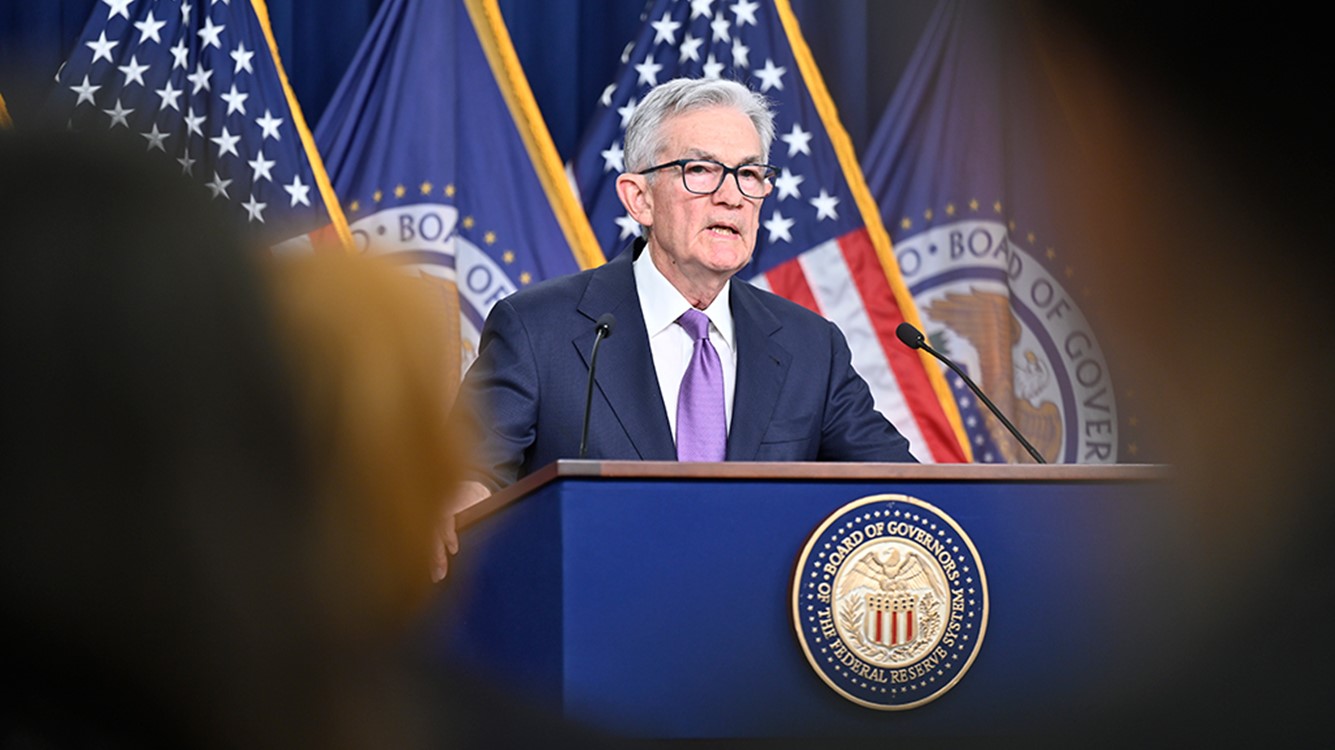Fed pauses, leans toward one cut
Wage growth has moderated but is still at a level that is higher than what is consistent with a 2% inflation target.

June 12, 2024
The Federal Open Market Committee (FOMC) voted unanimously to keep rates unchanged at their current 5.25% to 5.5% range at the meeting today. The statement had only one major change and that is they crossed out “a lack of” further progress on inflation and replaced it with “modest.” That was to reflect the data released on the consumer price index today. That underscores the Federal Reserve’s caution about taking one month of data out of context. The Fed was scheduled to release a new set of forecasts today as well. The forecasts were made largely prior to the release of the consumer price index, although the chairman received that data last night, when the White House received the data.
Fed Chairman Jay Powell underscored that the Summary of Economic Projections is less important than the “totality of data” and how that affects the outlook for inflation and unemployment. The Fed did not alter its forecasts for 2024 for growth and unemployment; real GDP growth is still forecast to rise by 2.1% on a fourth-quarter-to-fourth-quarter basis, while unemployment is expected to hold at 4%.
The largest change to the outlook was inflation, which was revised up for both the overall and core measures of personal consumption expenditures (PCE). The core PCE is now expected to end the year at 2.8%. That is largely because of the sharp improvement in inflation that we saw last year, which is expected to buoy annual inflation measures in the second half. Powell went to great lengths to explain this.
The Fed has a communication problem later in the year, especially if the three-month and six-month annualized data on inflation show it cooling even as the year-over-year measures look sticky. Our own calculation suggests that we need core inflation to fall below 0.17% every month to get inflation below the 2.8% year-end figure.
Participants at the meeting moved down their rate cuts from a median of three in March to only one in June; 8 members expected two cuts, 7 expected one cut and four members wrote down “no cuts” for the year. I would be willing to bet money that participants who were worried we might need another hike at the May meeting moved to the sidelines after today’s inflation report.
Powell was pushed about whether members changed their trajectory of rate cuts in response to today’s data. Powell said members can change their forecasts after a key piece of data comes out during the meeting. Some do, most do not, change their forecast as one month does not a trend make.
Powell addressed the tale of two economies present in the employment report in May; the household survey showed a drop in employment, while the establishment employment survey accelerated. Other data on the labor market shows that although the labor market is coming into better balance, it is still very strong. Job openings are still above the levels we saw prior to the pandemic, layoffs remain extremely low and the number of job openings versus job seekers is still above pre-pandemic levels. Wage growth has moderated but is still at a level that is higher than what is consistent with a 2% inflation target.
The Fed has raised its long-term non-inflationary rate for the fed funds rate. Powell was careful to say that the Fed hadn’t decided that the non-inflationary rate had risen. However, he did acknowledge that there is a sense that rates will not return to the ultra-low rates we saw in the 2010s barring a major disruption to the economy (e.g. a recession). The median forecast for the terminal rate rose to 2.8% from 2.6% in March, with one person marking up the Fed’s long-term rate quite substantially to 3.75%.
Powell addressed sources of inflationary pressures, noting that housing shortages remain persistent, and that the best thing the Fed can do for the housing market is bring shelter inflation down. Powell noted that we still have inflation in non-housing services, which could be more related to wages. Goods prices have been elevated along with housing-related services. The rise in goods prices has been on the import side, with disruptions to supply chains exacerbating those increases.
Powell was clearly pleased with the ongoing strength of the economy and likely pleased that rate hikes were not as much a topic today after the inflation data was released as they were in May. The largest error the Fed could make is to cut prematurely and stoke a more persistent bout of inflation, but he did acknowledge “two-sided risks.” The Fed could do too much or too little to cool inflation. He left the option to move more rapidly if the data were weaker than expected, although he was reluctant to say what would prompt the Fed to cut sooner.
The Fed is not likely to have enough confidence that the economy is cooling to cut rates by September.
Diane Swonk, KPMG Chief Economist
Bottom Line
The Fed remains on hold and our forecast for a December rate cut holds. The Fed is not likely to have enough confidence that the economy is cooling to cut rates by September, even though the possibility of a September rate cut rose today. One problem is that the only PCE data that the Fed will have by the September meeting is the July PCE data.
Explore more

A pregnant pause
No rate cuts are imminent, barring an “unexpected weakening” in the labor market.

KPMG Economics
A source for unbiased economic intelligence to help improve strategic decision-making.

Election year dissonance: Midyear economic outlook
Everything from higher rates to investment delays triggered by the election could suppress economic activity.
Subscribe to insights from KPMG Economics
KPMG Economics distributes a wide selection of insight and analysis to help businesses make informed decisions.
Meet our team

